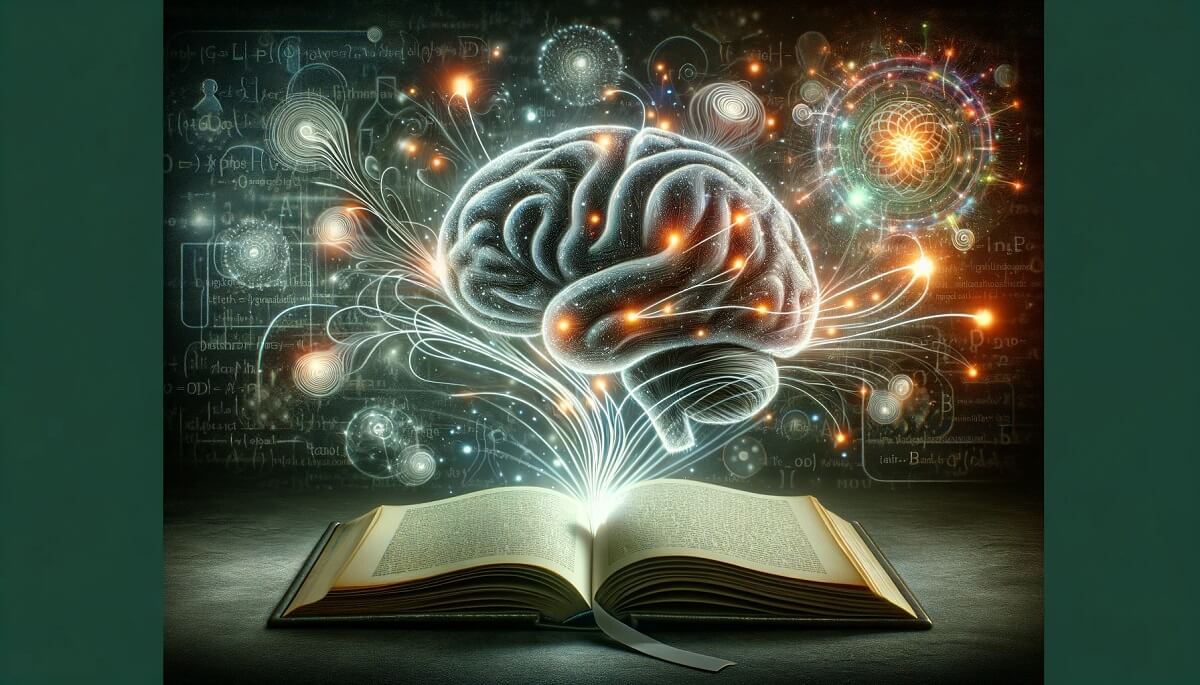
How to Apply Critical Thinking Skills to Reading
Have you ever read an article, finished a chapter, or reviewed a report only to realize you couldn't recall much of what you just read? It's not an uncommon experience. Many of us struggle to grasp and retain the material we encounter. Reading without critical thinking often becomes passive, where words flow in and out without leaving much impact.
But reading doesn't have to be this way. You can turn reading into a dynamic and rewarding process by applying critical thinking skills.
Critical thinking empowers you to analyze ideas, question assumptions, and engage more deeply with the material. Whether tackling an academic textbook, a business report, or a news article, this approach helps you understand, evaluate, and apply the information effectively.
This guide will explore how critical thinking enhances reading, provide actionable strategies for implementing these skills, and share practical examples to make the process accessible for everyone. Let's explore how you can transform your reading experience with critical thinking.
What Are Critical Thinking Skills?
Critical thinking is about engaging with information deliberately and reflectively. It's not just about absorbing words but questioning, analyzing, and synthesizing ideas to form well-reasoned conclusions. It involves being curious, open-minded, and willing to challenge assumptions—yours and others.
Critical thinking allows you to go beyond surface-level understanding when applied to reading. It helps you evaluate the author's arguments, identify biases, and make connections to other ideas or experiences.
For example, when reading an opinion piece, critical thinking encourages you to ask, "What evidence supports this argument? Is there an alternative perspective?"

Key Components of Critical Thinking in Reading
-
Observation: Pay attention to details, such as the author's tone, word choice, and structure.
-
Questioning: Asking why the author presents specific points or evidence.
-
Interpretation: Identifying deeper meanings, themes, or implications in the text.
-
Evaluation: Assessing the evidence's quality and the sources' credibility.
-
Problem-Solving: Resolving ambiguities or conflicting ideas within the material.
How Critical Thinking Enhances Reading

1. Improving Comprehension
Critical thinking encourages active engagement with the text. Instead of simply reading words, you ask questions, make connections, and challenge ideas.
Research shows that readers who use critical thinking techniques retain more information and demonstrate better comprehension than those who read passively. For instance, actively summarizing a chapter in your own words helps cement the material in your memory.
2. Evaluating Arguments and Identifying Bias
Authors often write with specific agendas or perspectives, whether transparent about it. Critical thinking helps you recognize these biases and evaluate the strength of their arguments. For example:
-
Does the author provide evidence to support their claims?
-
Are there alternative viewpoints that aren't addressed?
This skill is precious when consuming news or opinion pieces, where recognizing bias can help you avoid being misled.
3. Making Informed Interpretations
Reading is more than just understanding what's written; it's about interpreting the broader context.
For example, when reading a historical account, critical thinking allows you to consider the period, the author's perspective, and how those factors might influence the narrative.
Steps to Apply Critical Thinking to Reading

1. Pre-Reading Strategies
Set a Purpose
Before diving into a text, ask yourself, "What do I want to learn from this?" Knowing your goal helps you focus on the most relevant parts of the material.
Research the Author and Context
Understanding who wrote the material and why can give you valuable insight. For example, an author with a background in environmental science might approach climate change differently than a journalist with no formal training in the field.
Preview the Material
Skim headings, subheadings, and summaries to understand the structure and main ideas. This prepares your mind to engage with the text more effectively.
2. During-Reading Strategies
Annotate and Highlight
Mark key ideas, jot down questions, and underline passages that resonate with you. For instance, if the author uses a specific statistic, note where it comes from and whether it seems credible.
Ask Questions
-
What is the main argument?
-
Is the evidence strong and relevant?
-
Are there gaps or unanswered questions?
Look for Patterns and Contradictions
Notice if the author contradicts themselves or if certain themes keep appearing. This can give you a deeper understanding of their perspective.
3. Post-Reading Strategies
Summarize the Material
Write a summary of what you've read in your own words. For example, after reading a news article, summarize the main argument and the evidence used to support it.
Critique the Content
Ask yourself:
-
Did the author achieve their purpose?
-
Were the arguments balanced and well-supported?
Apply What You've Learned
Consider how the information connects to your life or other knowledge. For instance, if you read a self-help book about time management, consider how the strategies align with your daily routine.
Real-Life Applications of Critical Thinking in Reading

1. In Academics
Critical thinking is the foundation of academic success. It enables students to engage deeply with their studies and produce thoughtful, well-supported work. It allows students to go beyond rote memorization, empowering them to analyze, evaluate, and apply information meaningfully.
Whether reading scholarly articles, conducting research, or participating in discussions, critical thinking helps students develop a nuanced understanding of their subjects.
For example, imagine a student tasked with writing a literature review for a research paper. Instead of summarizing each source, a critical thinker evaluates the quality of the arguments presented:
-
Does the author provide sufficient evidence to support their claims?
-
Are there gaps or inconsistencies in their reasoning?
-
How does this work compare to newer studies or alternative viewpoints?
This reflective process might uncover that a frequently cited study needs to be updated or has been refuted by more recent research. By integrating these insights, the student's review becomes more thorough and credible, showcasing their ability to engage critically with the material.
This approach not only strengthens the quality of their work but also demonstrates intellectual maturity.
2. In the Workplace
Critical thinking is an invaluable skill for professionals in any field, enabling them to make informed decisions and solve problems effectively. In the workplace, critical thinking often comes into play when analyzing reports, evaluating proposals, conducting team discussions, or making strategic decisions. Instead of accepting information at face value, critical thinkers delve deeper, asking questions to uncover potential issues and assess the viability of proposed ideas.
For instance, consider a manager reviewing a project proposal. While the document may outline an ambitious plan, a critical thinker would pause to ask:
-
Are the cost estimates grounded in realistic assumptions?
-
Does the proposed timeline account for potential setbacks?
-
What risks are involved, and how can they be reduced?
This process might reveal gaps in planning, such as underestimated costs or an overly optimistic timeline. By addressing these concerns early, the manager ensures the project is more likely to succeed.
3. In Everyday Life
Critical thinking isn't just for academics or professionals—it's a vital skill in everyday situations where decisions must be made based on available information. Whether reading news headlines, researching health advice, or comparing product reviews, critical thinking helps you sift through the noise and focus on what is essential.
For example, imagine you're shopping online for a new kitchen appliance. You come across glowing reviews that seem too good to be true. A critical thinker would pause and ask:
-
Are these reviews specific or overly generic?
-
Do the reviewers sound like real people, or are their comments suspiciously similar?
-
Is the star rating consistent with the written feedback?
You might recognize fake or biased reviews by identifying patterns, such as repetitive language or excessively positive comments without specifics. This scrutiny could save you from buying a low-quality product based on misleading feedback.
Beyond shopping, critical thinking also applies to consuming news. In today's digital landscape, headlines are often designed to grab attention rather than convey balanced information.
A critical thinker evaluates the source's credibility, checks whether claims are supported by evidence, and seeks alternative perspectives to gain a well-rounded understanding of the topic. For example, if a news article claims a groundbreaking scientific discovery, you might ask:
-
Is this source reputable?
-
Does the article cite experts or research studies?
-
Are other reputable outlets reporting the same story?
This habit of questioning helps you avoid misinformation and form a more accurate view of current events.
Conclusion
Reading is a skill that goes beyond mere comprehension—it's a gateway to knowledge, understanding, and growth. By applying critical thinking, you turn reading into an active, enriching process that sharpens your mind and broadens your perspective. Whether a student, professional, or lifelong learner, the strategies outlined here can help you read more effectively and gain deeper insights from every text.
So the next time you pick up a book, article, or report, don't just read—think critically. You'll be amazed at the difference it makes.
FAQs
What is critical thinking in reading?
It's the process of analyzing, questioning, and evaluating the information in a text.
Why is critical thinking necessary for students?
It enhances comprehension, fosters independent thinking, and improves academic performance.
How can I practice critical thinking while reading?
Start by asking questions, annotating key ideas, and evaluating the evidence provided.
Can critical thinking be applied to fiction?
Yes, it helps uncover themes, character motivations, and deeper meanings.
What are some tools to improve critical reading?
Tools like annotation apps, highlighters, and critical thinking frameworks can enhance your approach.


